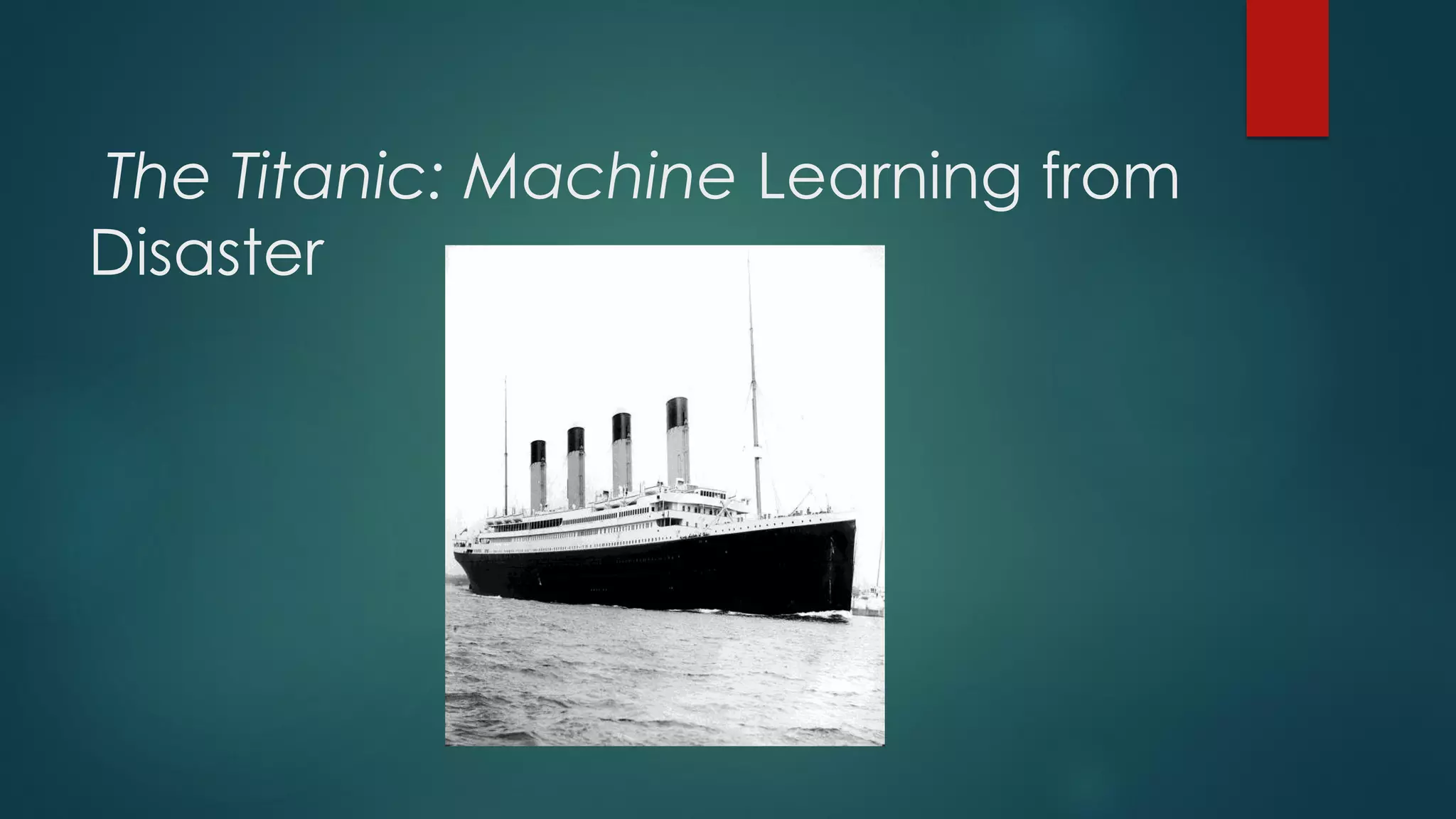Hey there, data enthusiast! Ever heard of the Titanic? I mean, who hasn't, right? Big boat, iceberg, *tragic* movie... but did you know it's also a playground for **machine learning**?
Yeah, I'm serious! It's like, a rite of passage for aspiring data scientists. The "Titanic: Machine Learning from Disaster" competition on Kaggle is where many of us cut our teeth (or should I say, bumped into icebergs?). Think of it as your first coding crush – maybe a little intimidating, but ultimately rewarding.
So, What's the Deal?
The goal is simple (on the surface, anyway): given a dataset of Titanic passengers and some of their characteristics (age, sex, class, etc.), can you predict who survived and who, well, didn't? Sounds morbid? Maybe a little. But it's all about the data, baby!
You get two datasets: a training set (where you know who lived and died) and a test set (where you only have the passenger info and need to make predictions). It’s like a historical puzzle, but instead of Sherlock Holmes, you’ve got Python and a bunch of algorithms.
Think of it like this: you're trying to build a **model** that understands the patterns that led to survival. Was it better to be a woman? A first-class passenger? A child? (Spoiler alert: probably yes to all three).
Navigating the Data Sea
First things first, you gotta wrangle the data. This means cleaning up any messy bits – dealing with missing values (like age – everyone lies about that!), converting text to numbers (machine learning algorithms don't speak human!), and exploring the data to get a feel for it.
This stage is crucial. Garbage in, garbage out, as they say. You wouldn't want your model to think that "NaN" is a perfectly acceptable age, would you? (Unless you’re modeling ancient sea creatures, maybe).
Feature Engineering: This is where the magic happens. Think about creating new columns from the existing ones. Like, maybe the size of a family (number of siblings + number of parents + 1) influenced survival? Or perhaps combining titles like "Mr." and "Mrs." into a "status" category. Get creative! The ocean is your oyster (or, uh, your dataset is).
Choosing Your Weapon (Algorithm)
Now comes the fun part: selecting a machine learning algorithm. There are tons to choose from: Logistic Regression, Random Forests, Support Vector Machines (SVMs), Gradient Boosting... it's like a buffet of statistical goodness!
Don't worry if you don't know what all these mean yet. The Titanic competition is a great way to experiment and learn. Start with something simple, like Logistic Regression, and then gradually explore more complex models.
Pro Tip: Don't be afraid to Google! Stack Overflow is your best friend. Seriously, every single question you have has probably been asked (and answered) already.
The Thrill of the Submission
Once you've trained your model, you'll use it to make predictions on the test set. Kaggle will then score your predictions based on accuracy – how well you correctly identified the survivors.
The anticipation as you hit that "Submit" button? *Chef's kiss.* Even if your score isn't amazing, it's still a HUGE accomplishment. You built a model, made predictions, and learned a ton along the way. Celebrate your wins, big or small!
More Than Just a Score
The Titanic competition is more than just about getting a perfect score. It's about learning the fundamentals of machine learning, experimenting with different techniques, and becoming part of a vibrant community. You'll find tons of notebooks and discussions online where people share their code, ideas, and insights. It's a fantastic way to learn from others and level up your skills.
Plus, let's be honest, it's kind of cool to say you've built a model to predict Titanic survival. It's a great conversation starter at parties (okay, maybe not every party… but the right ones!).
So, what are you waiting for? Dive into the "Titanic: Machine Learning from Disaster" competition! Don't be intimidated by the data, the algorithms, or the sheer size of the task. Just take it one step at a time, learn from your mistakes, and most importantly, have fun! You might just be surprised at what you can achieve. Who knows, you might even become the Captain of your own data science journey!





